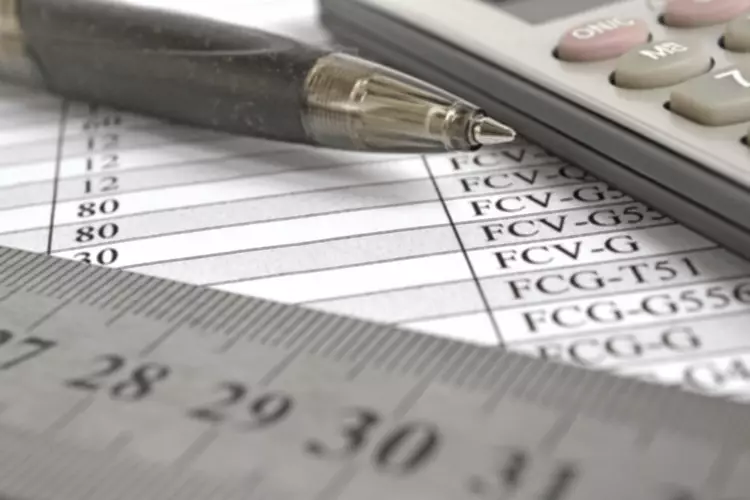How To Create A Restaurant Balance Sheet: Example & Template
Content

The company must then finance its short-term needs either by its working capital or by short-term financial debts (current bank overdrafts). When the WCR is equal to 0, the operating resources make it possible to cover the uses in full. No financial need is generated by the activity and the excess resources released will help to feed the net cash flow of the company.
- Current assets include cash, accounts receivable, inventory, and prepaid expenses.
- By identifying which dishes are your most profitable, you can start to make informed decisions.
- The financial autonomy ratio measures the degree of importance of internal financing compared to total financing.
- With a restaurant balance sheet template to go by, it’s easy to keep track of your operations and plan for the future.
- There are many challenges and opportunities for those in the restaurant sector, but not all of these affect every business in the same way.
Like every other business, the long-term success of your restaurant depends on data-driven decisions. Using restaurant balance sheets with profit & loss statements helps you understand your business’s current financial health and discover opportunities to grow revenue. Ultimately, the main purpose of a balance sheet is to help you verify the accuracy of a profit and loss statement, and to provide you with a more holistic view of your restaurant’s financial health.
Restaurant Profit Margin
Restaurant rent usually takes around 8% of sales but it’s not unusual for some chains to have large swings between high-traffic and low-traffic locations. Location strategy is key to optimize occupancy costs, especially when opening a restaurant. Food costs are such a large burden for restaurants that rising commodity prices can directly (and dramatically) impact a company’s bottom line. Even modest increases in commodity prices can require restaurant operators to re-engineer their operating costs and, often, even their menus.
What are restaurant financial statements?
A restaurant profit and loss statement (also known as an income statement, statement of earnings, or statement of operations) is a management tool used to review the total revenue and expenses of a business in a given period of time. At its most basic level, a P&L reflects costs that are subtracted from sales.
The so-called “current” assets, that is to say the most easily available, are located at the bottom of the balance sheet while the fixed assets are at the top. The same principle is valid for liabilities where debts have a more liquid value than equity. Examples of assets that might https://www.bookstime.com/articles/accounting-automation appear on a balance sheet for a restaurant include cash (bank accounts, cash register, cash safe), receivables, inventory and equipment. It’s crucial for the director of finance or accounting to manage the AR and AP aging reports and credit approvals based on cash flow statements.
What is a Restaurant Balance Sheet (and Why It is Important)?
Gain valuable insights into the boutique industry’s financial landscape with 9 comprehensive statistics covering sales, expenses, profit, and more. Explore the financial performance of boutique businesses and stay ahead in this thriving sector. Adam is the co-founder of ProjectionHub which is a SaaS web application that helps entrepreneurs create https://www.bookstime.com/articles/restaurant-bookkeeping financial projections for their business. Since 2012, over 40,000 entrepreneurs from around the world have used ProjectionHub to help create financial projections. Bankable is a Small Business Administration (SBA) lender that makes loans from $500 to $250,000 to Indiana small businesses that are unable to secure financing from a traditional bank.

I knew
that this was not a good situation and one that should not be permitted. It
preyed on my mind so much that several months later I asked him if he ever got
the inventory completed. I then told him that as long as he did not
have a month-end inventory, he was vulnerable to the same fraud that had nearly
bankrupted the company earlier.
Download the Free Restaurant Balance Sheet Template
If you do not produce regular monthly financial
reports on your restaurant, you are flying blind. One critical mistake often
made by new restaurant entrepreneurs is that they think they can save a few
dollars by doing their own accounting and get by without the expense of a
professional accounting service. Whether the operating result is positive or negative, the balance sheet must always remain balanced! The balance between assets and liabilities is maintained at all times because each transaction systematically affects several balance sheet items. While the balance sheet is important because it reflects the financial health of your establishment, it’s too often poorly controlled and under-exploited.
Restaurant liabilities are what a restaurant owes for a certain period of time, like outstanding vendor bills, rent for property or equipment, lines of credit, or loans. For example, a balance sheet dated December 31, would show a restaurant’s financial status as of the close of business on that particular New Year’s Eve. This has a different meaning than the phrase “for a stated period of time,” which describes a time period covered by an income statement. Restaurant financial statements should be prepared on a schedule created by management. Plate IQ is the AP solution that syncs with restaurants’ financial statements and tech stacks. In this guide, we’ll go over the most essential financial statements for restaurants.
Products for Restaurant Operations
A restaurant’s income statement, also known as the profit and loss (P&L) statement, gives an overview of its expenses and revenue and summarizes its profits or losses for a given period of time. The income statement helps restaurant owners understand how much they have spent, how much they have earned, and how much profit they have made in a certain time frame. A balance sheet shows the net worth of a restaurant at a certain moment in time, detailing your restaurant’s assets, liabilities, and equity. Your balance sheet empowers you to understand your general financial health in the moment, as well as forecast your short-term and long-term cash flow. With your cash statement in hand, you know whether you are losing money, making money, or breaking even.
- Please declare your traffic by updating your user agent to include company specific information.
- You should also make sure to have a robust restaurant business plan and read some restaurant management books for even more guidance.
- U.S. publicly traded restaurant companies have a median basic Earnings Per Share of $1.0 (as of 2017).
- It
preyed on my mind so much that several months later I asked him if he ever got
the inventory completed. - Gain valuable insights into the boutique industry’s financial landscape with 9 comprehensive statistics covering sales, expenses, profit, and more.
- This is important because it can help you and your managers keep track of inventory levels and make sure that you’re not ordering too much or too little.
